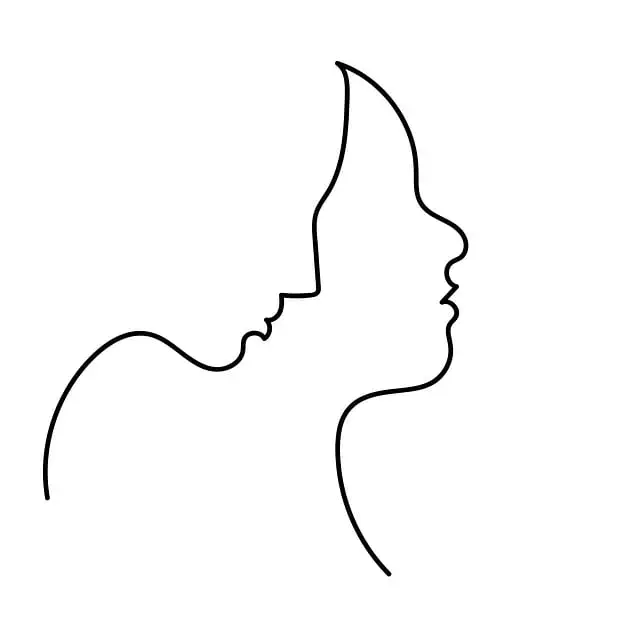Botox treatments for forehead lines and frown lines are popular, safe, and effective cosmetic procedures. By temporarily paralyzing specific muscles, it smoothes dynamic wrinkles, offering significant aesthetic improvements with mild side effects that last several months. Choosing a qualified healthcare provider at a reputable clinic is crucial, along with understanding potential risks, side effects, and follow-up care. Results vary among individuals, with regular maintenance treatments needed to prolong the reduced wrinkling effect. Extensive clinical research supports Botox's safety and efficacy, making it a go-to non-surgical option for many seeking to minimize forehead lines and frown lines.
“Uncover the transformative potential of Botox, a leading non-surgical aesthetic treatment. This comprehensive guide delves into the safety and effectiveness of Botox for addressing forehead lines and frown lines, providing insights into its mechanisms, benefits, and risks. Learn about the expert consultation process, recovery tips, and long-term maintenance requirements. Discover real patient stories and explore why Botox is a trusted choice for achieving youthful, confident looks. Whether considering Botox for the first time or seeking advanced knowledge, this article offers valuable insights into the world of Botox treatments.”
Understanding Botox: A Comprehensive Overview

Botox, a popular and minimally invasive cosmetic procedure, has become synonymous with smoothing out fine lines and wrinkles, particularly on the forehead and between the eyebrows (frown lines). It’s a protein produced by bacteria that, when injected into specific muscles, temporarily paralyzes them. This action prevents the contraction of these muscles, which is what causes dynamic wrinkling over time. By targeting problem areas, Botox can provide a significant improvement in appearance for those seeking to reduce the signs of aging.
The procedure’s safety and effectiveness have been well-documented, with numerous clinical studies supporting its use. When administered by a qualified healthcare professional, Botox for forehead lines and frown lines offers a safe and low-risk option. Side effects are typically mild and temporary, such as bruising or headaches, and they subside within a few days. The results of Botox treatments can last for several months, providing patients with a prolonged period of reduced wrinkling and a more youthful appearance.
Botox for Forehead Lines: How It Works and Benefits

Botox has emerged as a popular non-surgical treatment for reducing facial wrinkles, particularly focusing on the forehead and frown lines. When injected into specific muscle groups, Botox blocks nerve signals that cause the overactive muscles to contract. This action prevents the formation of dynamic wrinkles, offering a smoother appearance.
For individuals concerned about forehead lines and frown lines, Botox provides a safe and effective solution. By relaxing the facial muscles, it can prevent these lines from forming or significantly reduce their depth. The procedure is minimally invasive, with small injections delivered directly into the target areas. This method allows for targeted treatment, minimizing side effects often associated with more extensive procedures.
Addressing Frown Lines with Botox: Effective Treatment Options

Botox has established itself as a popular and effective treatment for both forehead lines and frown lines, offering a non-surgical solution to combat signs of aging. When injected into specific muscle groups, Botox can relax these muscles, preventing them from contracting and forming wrinkles. This results in a smoother, more youthful appearance. For individuals seeking to reduce the depth and frequency of frown lines and forehead creases, Botox presents a safe and relatively painless option.
The treatment is particularly effective for dynamic wrinkles, which are caused by recurring muscle contractions. By blocking these nerve signals, Botox can soften and smooth out these lines over time. Numerous clinical studies have demonstrated Botox’s safety and effectiveness in treating frown lines and forehead lines, making it a go-to choice for many aesthetic practitioners and their patients.
Safety Considerations: Risks and Side Effects of Botox Injections

When considering Botox for forehead lines and frown lines, it’s crucial to be aware of safety considerations and potential risks. Like any medical procedure, Botox injections carry certain side effects, though they are generally mild and temporary. Common risks include bruising, swelling, and discomfort at the injection site. In rare cases, patients may experience more severe reactions, such as headaches, nausea, or difficulty breathing. It’s essential to choose a qualified healthcare provider with extensive experience in administering Botox to minimize these risks.
Additionally, while Botox is approved for the treatment of moderate to severe frown lines and forehead wrinkles, its effectiveness can vary from person to person. Results typically last between 3 to 6 months, after which the effects gradually wear off. Some individuals may require touch-up injections to maintain their desired results. Understanding these variables ensures informed decision-making regarding Botox for forehead lines and frown lines, balancing safety and effectiveness.
Choosing the Right Clinic: Ensuring Quality Care and Expertise

When considering Botox treatments for forehead lines and frown lines, choosing the right clinic is paramount to ensuring safety and effectiveness. Look for a clinic that specializes in aesthetic procedures and has an experienced, board-certified dermatologist or plastic surgeon on staff. Check their credentials, reviews, and patient testimonials to gauge their expertise and track record. A reputable clinic will prioritize sterile environments, use high-quality products, and provide comprehensive consultations to address your specific concerns.
Additionally, ask about their processes for consent, aftercare, and managing expectations. A good clinic should offer personalized treatment plans tailored to your needs, explain potential side effects, and provide ongoing support post-treatment. Their focus should be on enhancing your natural features while ensuring a safe and comfortable experience throughout the entire process.
The Consultation Process: What to Expect Before Your Procedure

Before undergoing any cosmetic procedure, including Botox for forehead lines and frown lines, it’s crucial to have a comprehensive consultation with a qualified healthcare provider or dermatologist. This initial meeting is your opportunity to voice concerns, ask questions, and gain a clear understanding of what to expect. During the consultation, you can discuss your medical history, any medications you’re taking, and previous treatments, as these factors may impact the procedure’s safety and effectiveness.
Your practitioner will examine your skin, assess the severity of wrinkles, and determine the best treatment plan tailored to your needs. They’ll explain the process step-by-step, including the type of Botox product used, the areas to be treated, potential side effects, and expected results. It’s a chance for open dialogue, ensuring you feel comfortable and informed about one of the most popular anti-aging treatments available today.
Recovery and Aftercare: Tips for Optimal Results and Minimizing Discomfort

After your Botox treatment for forehead lines and frown lines, it’s crucial to follow specific aftercare tips for optimal results. This includes avoiding strenuous activities for a few days, staying hydrated, and applying a cold compress to reduce swelling and discomfort. Over-the-counter pain relievers can also help manage any mild soreness. Remember not to massage the treated areas and avoid using makeup or skincare products for 24 hours to prevent irritation.
For best outcomes, follow up with your dermatologist as scheduled. They can assess the progress of the treatment, address any concerns, and provide additional advice tailored to your needs. Good healing practices, such as getting plenty of rest, eating nutritious meals, and steering clear of alcohol and smoking, will also aid in the overall recovery process.
Long-term Effects and Maintenance: How Often Is Treatment Needed?

Botox treatments for forehead lines and frown lines have become increasingly popular, offering a non-surgical solution for cosmetic concerns. While many patients experience significant results that last several months, it’s essential to understand that Botox is not a permanent fix. Long-term effects can vary from individual to individual, depending on factors like age, skin type, and muscle activity.
The frequency of maintenance treatments depends on how quickly the body breaks down the Botox and the patient’s desired level of results. Generally, injections are recommended every 3 to 6 months to maintain the smooth, youthful appearance achieved with Botox. Regular treatment helps prevent the return of wrinkles, ensuring patients can enjoy the benefits for longer periods without significant fading.
Real Stories: Patient Experiences with Botox for Forehead and Frown Lines

Many real-life stories highlight the effectiveness and safety of Botox for treating forehead lines and frown lines. Patients often report significant improvements in their appearance and confidence after receiving this treatment. One common theme is the reduction of deep wrinkles, which can make a person appear more relaxed and youthful.
These personal accounts emphasize that Botox isn’t just about aesthetics; it’s about enhancing one’s natural features and promoting self-esteem. Moreover, the procedure’s minimal downtime and quick recovery time are often mentioned as significant advantages, allowing individuals to return to their daily activities without prolonged disruptions. Patient experiences serve as a valuable resource, underscoring the positive impact Botox can have on one’s overall well-being and external appearance.
